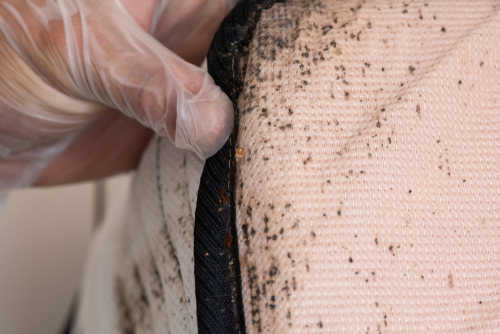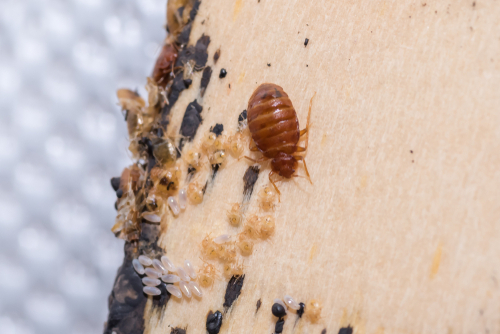
What Kills Cockroaches?
December 20, 2022
Pros and Cons of Using Natural Pest Control Methods
March 10, 2023Where Can I Usually Find Bed Bugs In My Home? (5 Mins Read)

Where Can I Usually Find Bed Bugs In My Home? Bed bugs have been around in countless homes for a very long time. These insects are flat and may easily squeeze into any convenient little space to access their meal. Because of their tiny size and unimaginable hiding spots, bed bugs are challenging to find, especially during the day.
However, daytime is better than nighttime for spotting bed bug signs. Being nocturnal pests, they emerge from their hiding places in search of a host at night. They feed on their host’s blood and are not known to infect people with any diseases. Although some people are unaffected by bed bug bites, others can still develop an allergy.
The signs are easy to notice only when there is a severe bed bug or infestation. But, infestation signs are hard to see in the early stage since they take time to manifest. You can use this time to your advantage by catching the infestation as soon as possible. This will be the key to handling efficiently or getting rid of the bed bugs problem on your own.
Discover more about bedbugs!

Before feeding, bed bugs are flat, wingless, reddish-brown, small insects and about one-quarter inch long. They could be similar to little apple seeds in size and shape. They cannot fly or jump; the only way they can move quickly is by crawling.
Bed bugs dislike bright light, so they are typically active at night, mainly to feed on blood. They hide throughout the day on beds, mattress seams, headboards, box springs, and bed frames. They can even be in nooks and crannies of furniture, walls, floors, and outlets. This does not, however, mean that bed bugs permanently hide when there is light, especially when starving.
How can you know whether bed bugs are in your home?

You can see the bed bugs themselves or follow the traces they leave behind to help you track them. The seams of the mattress and other things in the bedroom may include their shed skins, casings, eggs, and droppings. There may also be bites on human skin and blood stains on the bedding.
What are the usual places to find bed bugs at home?

Bed bugs commonly stay where they have convenient little space to hide and come out to access their meal. The following are the most typical locations for bed bugs:
- Mattress seams
- Box springs
- Headboards
- Bed frames
- Furnishings
- Walls
- Floors
- Electrical outlets and receptacles
What signs does bed bug infestation leave behind at home?

Bites on the human skin are poor indicators of the infestation of bed bugs. Their bites can resemble insect bites from those of mosquitoes and chiggers. They can also look like hives, and rashes, including those caused by eczema or fungal infections.
Searching for bed bugs’ visible signs is a more accurate technique to spot a potential infestation. Keep an eye out for the following when cleaning, switching out the bedding, or traveling away from home:
- live bed bugs
- white oval eggs they lay, or eggshells and pale yellow skin that nymphs shed as they mature, which are as little as 1mm
- beddings with reddish or rusty stains brought on by squashed bed bugs
- dark colors that are bed bug droppings and bleed on the fabric like the size of a marker would
What to do if you find bed bugs in your home?

You should take several precautions if you find bed bugs in your home. Don’t remove anything from the infested room to prevent bed bugs from moving elsewhere. Never try to get rid of bed bugs with bug bombs or fogger sprays. They are risky since they have a limited area of action.
They only worsen the bed bug problem by encouraging bed bugs to relocate to other areas of your home. Sticky traps for bed bugs, commonly called interceptors, should be used instead of sprays and explosives. Interceptors are known as passive traps, which do not lure bed bugs.
However, bed bugs are trapped using interceptors before they attempt to crawl over you to suck out blood. You can contact a pest control expert if things get out of hand.



